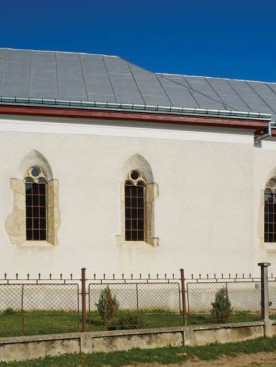The Reformed Church of AgrișLocated north-eastward to Szatmárnémeti, the village was first mentioned in documents in the 14th century, however, according to the historians, it existed much earlier; it was named after Nagyégre stream. It was the demense and the name-giving land of the Egry family, who continuously owned the village from 1300 until the 19th century. However, in 1366 the land was mortgaged by László and János Egry to the Vasváry family, they soon reclaimed it by force, and as a consequence they had to answer for their deeds in the front of the king. During the Middle Ages, many people entered in great debate concerning the ownership of Egri, and in 1374, according to the unwritten law, its borders were established. But the arguments still had not ended, moreover they turned into litigation, assault and battery and it was so serious, that in 1420 another reestablishment of the borders was urged. During the Reformation, its minister was one of those nine ministers, who took part in the polemic against the Unitarian Blandrata and Ferenc Dávid held in 1569 at Oradea in the presence of John Sigismund Szapolyai. In 1822, a remarkable assembly took place in Agriș during which the territories of the dioceses of Sătmar county were organized and established. The church of Agriș was not mentioned in the medieval documents, however, except for the neo-Gothic tower built in 1955 and its modern cornice, the building shows medieval features, some elements are made of ashlar. The buttresses on the north-eastern side are perpendicular to the northern wall, and because of the lack of the plinth, the researchers presume that the sacristy might have been here, when the building was a Roman Catholic church. In the Middle Ages, probably there was an entrance on the western side, but we have no information about its shape. Double lancet windows spanned by archivolt cut across the southern wall of the nave. On the southern wall of the apse there are two identical round-arched windows, both ending in a circular tracery at the point of the arch. The nave has a flat ceiling and it is separated from apse by a chancel arch which has the form of a lancet arch. There is no sign of ciborium, sacristy door or sedilia in the apse, only the ribbed stellar vault shows its age, which rests on conical consoles. Once, these might have been decorated by shields with coat of armour. What makes the vault of the apse interesting is, that the corners, from which several ribs spring out, come out of the pillars at different heights. It looks like as if a net covered the benches below. Unfortunately, we don’t have enough historical data about the building, so we have to believe that the survey of the walls will provide some information about its history. However, it is certain, that the owner Egry family of the village had the church of Agriș built at the beginning of the 16th century. |













